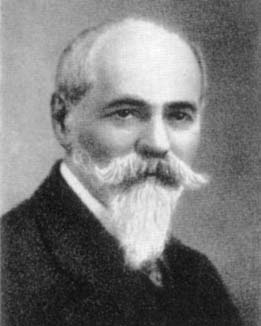
Born: October 3, 1863, Romanowka, Russia (presently Ukraine)
Died: November 23, 1942, Cracow, Poland
Early days. Stanislaw Zaremba's father was an engineer.
Higher education. Zaremba attended secondary school in St Petersburg then, after graduating, he studied engineering at the Institute of Technology in that city. He was awarded his engineering diploma in 1886 and he then went to Paris where he studied mathematics for his doctorate at the Sorbonne.
As a topic for his doctorate Zaremba looked to build on ideas introduced by a great German mathematician Riemann in 1861. His doctoral thesis Sur un problème concernant l'état calorifique d'un corp homogène indéfini was presented in 1889. Zaremba made many contacts with mathematicians of the French school at this time which would provide him with international collaborators after returning to Poland. In particular he collaborated with known French mathematicians Painleve and Goursat.
Teaching and publishing in France. For eleven years he taught in schools in France, during which time he concentrated on his research. The fact that he published his results in French mathematical journals meant that his work became well known and highly respected by leading French mathematicians such as Poincare and Hadamard.
Professorship at the Jagiellonian Univ. Zaremba returned to occupied Poland in 1900 where he was appointed to a chair in the Jagiellonian University in Kraków. In the following years he achieved much in teaching, writing textbooks, and organizing the progress of mathematics in Kraków. Stanislaw Golab, a differential geometer, writing on the history of mathematics in Poland described Zaremba's teaching style :
[Zaremba's] teaching was characterized by absolute rigor and an insistence on an exposition of a subject's subtleties. His lecturing style employed long and convoluted sentences, whose logical progression became clear only after closer scrutiny. He enjoyed working on and solving difficult problems that bogged down other researchers. Always taking a philosophical view of a problem, Zaremba combined physical intuition with enormous erudition, a method that enabled him to connect seemingly unrelated problems.
President of Polish Math.Soc. In 1919 Zaremba was elected as the first President of the Mathematical Society of Poland. This Society became the Polish Mathematical Society in 1920. For many years he served the Society as editor of the Annals of the Polish Mathematical Society.
Golden age of Polish mathematics. From very unpromising times up to World War I, with the recreation of the Polish nation at the end of that war, Polish mathematics entered a golden age. Zaremba played a crucial role in this transformation. Slebodzinski, one of the mathematicians to work for the re-establishment of Polish mathematics after the Nazi destruction of the World War II, stressed that:
With the appearance of these two scholars [Zaremba and Zorawski] , Polish mathematics ceased to consume exclusively other people's thoughts and results and from that moment onwards began to participate actively in the development of its own science. The political circumstances of the period were such that, for a decade or more, Stanislaw Zaremba and Kazimierz Zorawski were the only representatives of Polish mathematics in contact with foreign countries.
Much of Zaremba's research work was in partial differential equations and potential theory. He also made major contributions to mathematical physics, crystallography and to the study of viscoelastic materials.
Recognition. A great French mathematician, Lebesgue, someone who seldom heaped praise on his colleagues, paid tribute to him in 1930 when Zaremba received an honorary degree from the Jagiellonian University in Kraków :
Zaremba's scientific activity influenced so many research areas that his name cannot be unknown to anyone interested in mathematics. However, it seems that the power of the methods he created, and the originality of his imagination, can be appreciated best by those who work in the area of mathematical physics. There he showed his style and his name is imprinted forever.
On the same occasion in 1930, another great French mathematician, Hadamard, wrote:
One cannot help mentioning the ideas which he inspired in the domain of research pertaining to those fields to which French science of the present century has devoted the most effort. The profound generalization due to him has recently transformed the foundations of potential theory and immediately became the starting point of research by young mathematicians of the French school. That generalization, in a degree truly unexpected in that field, is marked by that simplicity and elegance which characterize ideas pertinently and profoundly grasping the nature of things. And as for my specialty, why, how could I forget the splendid results in the domain of mixed boundary conditions and of harmonic functions, as well as of hyperbolic equations, research by means of which he opened a new path along which contemporary knowledge will proceed in the near future.
Zaremba received many honors. In addition to the honorary degree from the Jagiellonian University mentioned above, he received honorary degrees from Caen, France and from Poznan. He was elected to the Soviet Academy in 1925. Kuratowski wrote:
Stanislaw Zaremba is the pride of Polish science.
Based on the article by J.J. O’Connor and E. F. Robertson that appeared on the webpage of School of Mathematics and Statistics, University of St.Andrews, Scottland, at the following address:
St.Andrews university
GAP is Copyright (C) 1986--1997 by Lehrstuhl D fuer Mathematik,
RWTH Aachen, Aachen. Germany and Copyright (C) 1997-2001 by School of Mathematical and Computational Sciences, University of St. Andrews, St. Andrews, UK
GAP can be copied and distributed freely for any non-commercial
purpose.
Return to home page:
Prominent Poles